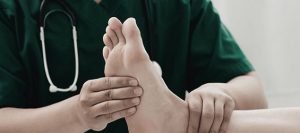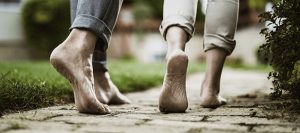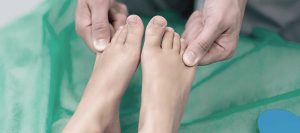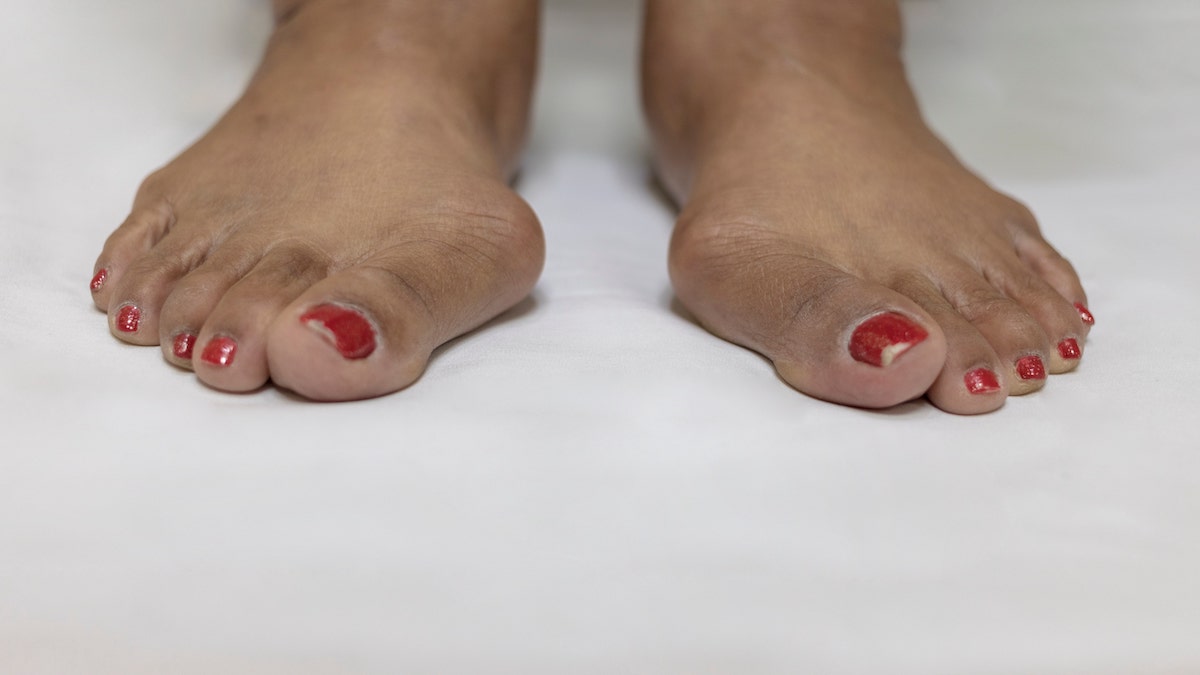
A bump by any other name is not always just a bump, despite the literary genius of one very famous Elizabethan bard who was referring to roses.
A bunion cannot be willed to go away, never darken your doorstep or find another toe, joint or foot to call home.
If left untreated, bunions are progressive and will grow and become more and more painful with each passing day.
According to a National Foot Health Assessment, about 18 million American women and 4 million men report having bunions every year.
They are also twice as common among people sixty years of age and older. But why do they occur so often, one might intelligently ask?
According to the teams at JAWS Podiatry, despite the frequency of their occurrence in almost one out of every three Americans, bunions are often misunderstood.
They are 10 times more likely to develop in women than men because of their choice of shoe wear. High heels are the enemy, although it takes a while to notice that.
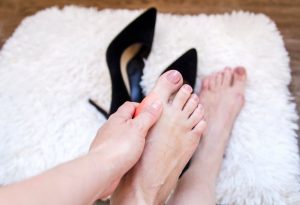 They force the toes downward and to fold over each other into the narrow part of the shoes.
They force the toes downward and to fold over each other into the narrow part of the shoes.
According to a study published online at Arthritis Care and Research, the ethnic group with the highest presence of bunions (whose Latin name is hallux valgus) was African American women at 70%. African American men came in at a close second at 69%.
Analyzing the statistics surrounding bunions requires an understanding of how the big toe functions.
This digit houses two vital joints, the longer of which is known as the metatarsophalangeal joint (thankfully known by its shortened version, MTP), which connects the first long bone of the foot ((metatarsal) to the first bone of the toe (phalanx).
When the MTP joint is forced out of its natural alignment due to excessive pressure from ill-fitting shoes, this causes a shift of the larger bone towards the inner part of the foot and and also forces the phalanx bones of the big toe toward the second toe. This results in the development of a bunion.
The Several Causes Of Bunions
Apart from high heels and shoes that are too narrow and too tight, bunions can arise from a number of other causes.
These include: arthritis, heredity affecting foot structure or anatomy or misalignment of the foot.
Some seventy percent of people who develop bunions have a family history, which indicates a significant genetic component. (This is particularly the case for bunions that develop during adolescence.)
Those afflicted with inflammatory diseases, such as rheumatoid arthritis, may also have a higher tendency to develop bunions.
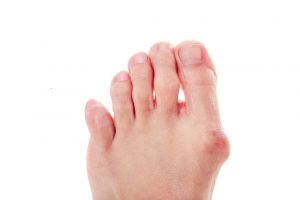
Some Interesting Facts About Bunions And Foot Care
1. Roughly 85% of people have legs that are two different sizes. This frequently results in an uneven gait and the development of a bunion on the foot of the longer leg.
2. It is estimated that 75% of Americans will experience some foot health issues of varying severity at least once during their lifetime.
3. The average American adult takes from about 4,000 to 6,000 steps every day and walks some 75,000 miles on their feet by the age of 50.
4. According to a study by the American Foot and Ankle Society, of the 88% of women who wear shoes that are too small, some 55% develop bunions.
5. Bunions are often hereditary. Even if you don’t wear high heels or ill fitting shoes, you may still be genetically predisposed to develop bunions if your parents or grand parents have or have ever had them.
6. It is estimated that 19% of the American population has on average 1.4 foot problems annually.
7. Bunions are the only food deformities that actually have a holiday named after them. National Bunion Day is September 23, and since 2018 has been sponsored by by innovative footwear company, Sole Bliss. The goal is to raise awareness of bunions, remove the stigma that is attached to them and offer practical advice for living more comfortably with the condition.
8. Bunionettes are not baby bunions. Formerly known as tailor’s bunions, this name derives from the fact that professional tailors at one time sat with their legs crossed all day long, which caused the outer side of their feet to rub on the ground. These deformities are usually found at the base of the pinky toe, and not the big toe, which is the case with their big brothers, so to speak.
9. Every human foot has 26 bones, which translates into the fact that 25% of all body bones are found in the feet.
10. If left untreated, bunions have progressive, and often nasty consequences. They force the big toe to press against the second toe and that one to press against the third, causing all the toes on a poor foot to become like a house of cards that collapses upon one another.
How Do Podiatrists Treat Bunions?
Bunion pain can be so severe that it can impact every waking second of the day.
It is best to act as soon as the pain starts and seek, at the very least, a medical consultation to consider potential options.
Dr. Abraham Wagner, south Florida’s acclaimed podiatrist, warns that is it is always what you don’t know that can hurt you and never the knowledge that arms you with a course of action.

Treatment focuses on relieving symptoms and non surgical options are always considered first.
These include: bunion pads and taping, which can cushion the affected area and soothe pain; changes in footwear, which take pressure off the toes; orthotic, over the counter or custom made inserts that help to control alignment issues; both topical and oral nonsteroidal anti-inflammatory drugs (NSAIDS) combined with ice packs, which serve to decrease swelling and pain, physical therapy (massage and ultrasound) and exercises for muscle strength.
Steroid injections are the last non surgical resort. They do help with pain, but the procedure is risky because if used in excess, it can cause damage to the toe joint.
If none of these options serve to reduce pain and swelling, and you live in south Florida, the place to go for surgical help is JAWS Podiatry.
There are diverse surgical options, and usually, smaller surgeries correct smaller bunions and more complex procedures correct larger ones.
A decision rests upon the results of a physical examination and x ray determinations. Usually, bunion surgery is a same day procedure, but a long recovery time is often necessary.
10 Tips for Proper Shoe Fit To Avoid Bunions
That old expression,“if the shoe fits,” applies here, but in a different way than originally intended.
The best way to deal with bunions is not to get them at all, but if you have them, our experts at JAWS Podiatry offer the following proactive tips.
1. Select shoes that are stable with wide insteps and broad toe boxes.
2. Always avoid shoes that are sharply pointed, too short or too tight and those with heels higher than a few inches.
3. Never select shoes based just on the size marked inside. Brand sizes vary and the only way to know a shoe is a good fit is to try it on.
4. Never buy shoes that are too tight and expect them to stretch over time and use.
5. Always buy shoes that conform as close as possible to the shape of your foot
6. Have your feet measured on regular basis because foot sizes change with aging.
7. Always measure both feet because in many instances, one foot is larger than the other. Fit shoes always to the largest foot and at the end of the day when feet are at their largest point.
8. Always stand during fitting and make sure there is enough space for the longest toe at the end of the shoe.
9. The ball of your foot should fit comfortably into the widest part of the shoe.
10. Always walk for a few minutes in the shoes to ensure that they feel right. Classy shoes can still be comfortable albeit minus the glitz glamor (and subsequent pain) of.narrow, tight fitting high heels.
In Conclusion
If you suffer from foot pain of any kind, call upon the collection of our caring professionals at JAWS Podiatry.
Our passion, skills and devotion to providing help and relieve of pain is unmatched anywhere in the nation!
- The Life-Changing Power of Cosmetic Foot Surgery - February 27, 2023
- What Are The Most Common Pediatric Foot Conditions? - October 5, 2020
- 4 Important Things To Know Before Having Foot Surgery - September 21, 2020

